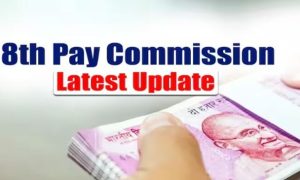Retired IAS officer RS Sharma was recalled from retirement few days before the vaccination drive started. He told PM Modi about the platform not being fully ready. Sharma expected the PM to be unhappy but he told him to ensure the digital platform was fully scaled by the time second dose was administered
Retired IAS officer Ram Sewak Sharma was relaxing at his ancestral village in Firozabad in Uttar Pradesh when he received a call from Prime Minister Narendra Modi on January 7, 2021.
The PM mentioned his earlier conversation with Sharma from May 30, 2020 regarding the roll-out of a technology for smooth running of Covid-19 vaccination in India, and promptly recalled Sharma to Delhi to join the team that launched the CoWIN platform. CoWIN proved to be the backbone of India 2-billion plus vaccine dose programme.
These details have been revealed based on an interview with Sharma in the upcoming book, ‘Braving a Viral Storm, India’s Covid-19 Vaccine Story’ by Aashish Chandorkar and Suraj Sudhir, published by Rupa Publications and slated to be unveiled by the Union Health Minister Mansukh Mandaviya next week. This shows that PM Modi had envisioned CoWIN as early as May 2020.
The former chief of the Unique Identification Authority of India (UIDAI) which had launched Aadhaar, Sharma was the Chairman of Telecom Regulatory Authority of India (TRAI) when the PM met him on May 30, 2020. “At this stage, there were no vaccines and no plan for a national vaccination drive. But the government was cognizant of challenges that a nationwide vaccination drive would face in execution. There was also a keen belief that use of technology could potentially help…” the book mentions.
SHARMA’S PRESENTATION
Read More : India’s Auto Expo set to return after 3 years; these prominent companies to skip marquee event – Details!
Sharma made a presentation to the PM at the May 30 meeting, stressing the Aadhaar-linked record of vaccination. What the government wanted also was a citizen-facing platform. The government repurposed its eVIN platform and tested it in more than 700 districts before the launch of CoWIN. The book mentions sensing that the technological backbone would need more robustness, PM decided to revive the team that had delivered Aadhaar and brought RS Sharma on board.
“The PM raised issues like the international recognition of certificates and emphasised that India had to be prepared in the best possible manner to ensure that proof of vaccination would not be questioned,” the authors say.
PM made the call to Sharma on January 7, 2021, and by that time, he had retired. Within days, Sharma was appointed head of the empowered group of technology and data management, member of NEGVAC administration and also the CEO of the National Health Authority (NHA).
THE CHALLENGES
Hitting the ground running, Sharma got on the job, but on January 14, 2021 — two days before India’s vaccination drive started — Sharma met the PM with a bad news that the platform was not fully functional yet. The authors say Sharma was expecting the PM to be unhappy but he instructed Sharma to ensure the digital platform was fully scaled by the time the second dose was administered to health and frontline workers, giving him hence a month.
Sharma’s five-member team worked on CoWIN and they put lessons from the Aadhaar platform development to good use for building robustness of the back-end, the book says. “The power of Digital India was proven when it was most required. CoWIN handled the volume of 25 million doses in 24 hours on September 17, 2021 without any glitches. By the end of 2021, India administered 145 crore doses. Each of them was recorded on CoWIN,” the book mentions.





































